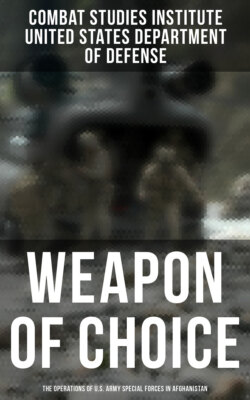Читать книгу Weapon of Choice: The Operations of U.S. Army Special Forces in Afghanistan - Combat Studies Institute - Страница 35
На сайте Литреса книга снята с продажи.
We Don’t Fail
ОглавлениеOn 21 September 2001, 10 days after the terrorist attacks on the United States, A Company, 112th Signal Battalion, received a U.S. Central Command (CENTCOM) deployment order to provide communications support to the JSOTF being established at K2, Uzbekistan, in support of Operation ENDURING FREEDOM. On 4 October, 37 soldiers deployed to the theater. They arrived on 6 October and reported to the JSOTF J6.
The 112th Signal Battalion was capable of deploying rapidly to establish the long-haul links to communicate from deployed special operations forces (SOF) to headquarters in Europe and the continental United States and to embassies in neighboring countries. Although this was a combat mission, it was a typical mission practiced numerous times on exercises both in the continental United States and abroad. Those exercises also led the company to develop standard communications deployment packages that minimized last-minute predeployment planning.
Figure 54. Antennas, power, and cabling installed first.
Figure 55. Initial signal links to K2.
An initial difficulty at K2 was determining where to set up. This was a critical decision because a guiding principle is that once communications have been established, the equipment should not be moved. There were only about 100 people on the ground when the company arrived in theater, and there was little knowledge of what other units would arrive or when. Additionally, available real estate was littered with trash and discarded Russian equipment, and the soil was contaminated with oil. Some difficulties developed among the communicators from different headquarters, and real estate allocators as units began to move into the base. A critical concern was that systems that processed Top Secret information be located near the Secure Compartmented Information Facility (SCIF). Not having the facility established early on led to equipment being moved and communications interrupted contrary to standard procedures.
The company deployed with one superhigh-frequency satellite hub, a tactical telephone switch, a data services team, one SCAMPI node to provide secure and nonsecure networking plus data services and secure telephones, equipment for secure video teleconferencing (VTC), and three Special Operations Communication Assemblage (SOCA) teams to provide tactical satellite (TACSAT) communications. They also took about 200 personal computers. Within 48 hours, the company had installed communications to support the Joint Special Operations Air Component (JSOAC) that had already been established. Real estate allocation difficulties that required some equipment to be moved and minor technical problems resulted in the SCAMPI not being reestablished for about four days. Normally, some of these problems are resolved in a predeployment communications exercise. Under the given conditions, however, being able to troubleshoot problems before hand was not possible. The company also deployed two SOCA teams to embassies and one team to provide communications between a Special Forces detachment at Mazar-e Sharif and its headquarters.
After approximately 100 days, A Company at K2 was replaced by a conventional Army signal battalion. That, though, did not end the unit’s involvement in the war against terrorism. In March 2002, the second platoon of B Company deployed to Bagram, Afghanistan, to provide communications to the JSOTF being established at that location. Second Lieutenant (2LT) Tom Washington (pseudonym), a former enlisted Special Forces soldier, and his platoon immediately appropriated space in a dirt field near the perimeter and went to work. Within 48 hours, as did A Company, Washington completed the links between the JSOTF and the higher headquarters. In his words, “that was possible only because incredible guys are running these systems.” The next month, soldiers from first platoon, B Company, established communications in Kabul between 1st Battalion, 3rd SFG, and the JSOTF. The platoon also deployed three SOCA teams to support forward operating bases (FOBs) in Khowst, Kandahar, and Shkin.
